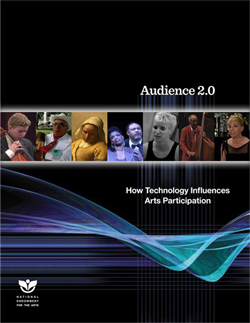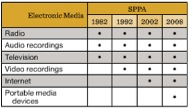This article explores the rise of virtual production (VP) and its impact on contemporary filmmaking through the use of large-scale LED volumes that merge physical sets with real-time digital environments. Using high-profile productions such as The Mandalorian and 1899 as case studies, it examines how VP reshapes creative workflows across departments, redistributes labor rather than eliminating it, and demands new hybrid skill sets from designers, location managers, and technicians. The piece also addresses the role of labor unions and training programs in adapting to emerging technologies, alongside the economic challenges of scalability, access, and high upfront costs. Ultimately, the article positions virtual production as a transformative - yet uneven - evolution in the entertainment industry, emphasizing the need for equitable training and infrastructure as VP becomes a lasting mode of production.
Hallyu 3.0: The Webtoon Take Over
The comics industry is undergoing a digital revolution without the forces of giant publishers Marvel or DC. It is being led by big tech, big-data, and its intermediation between audiences and individual creators. At the center of this global revolution is a popular app: Webtoon. Webtoon currently outpaces its competitors by an order of magnitude with 50 million+ downloads in the United States.
News Summary 10.2014
Every month, AMT Lab publishes a collection of recent arts management and technology news. This month, many articles focused on how the latest technologies, such as 3D printing, can be used to create art. Technology has had a profound impact on cultural industries, and as always we are deeply interested in following these trends.
Promoting Digital Media Art through Digital Media tools
In our technology-stuffed world, the difficulties faced by video artists seem paradoxical. Due to high up-front costs, and the difficulty of handling and selling digital technologies, established institutions such as art galleries and museums often shun their work. Artists may look at the entertainment industry as an alternative, but find themselves unfulfilled, as musicians typically come first in these sorts of collaborations.
Rise of the Masters
As the controversy surrounding internet piracy continues brewing, music industry officials and musicians continue to find new ways to promote and profit from their work. Digital downloads are one tool that make it easier for musicians to connect with and cultivate a fan base globally. The Recording Industry of America reports that there are more than 400 authorized digital music services worldwide offering more than 12 million songs. Digital sales compromise nearly one half of total revenues for the music business in the United States.
Digital downloads aren’t just for "current musicians", however. Apple’s recent acquisition of The Beatles music catalog resulted in 450,000 copies of Beatles albums and two million individual songs being sold in the first week alone.
Another exciting entry into the digital download market is Europe's leading digital label, X5. The label licenses music, acquires various catalogs and refines the material for high end products. This process has allowed them to form exclusive partnerships with and distribute music to companies like iTunes, Amazon, Rhapsody, Napster and Spotify. Since their formation in 2006, X5 has become the best selling classical label in the United States, with a product portfolio of over 200,000 titles. Spotify's principal owner, Northzone Ventures, is also investing 7 million Euro in the label.
In December of 2010, the company launched their latest classical music series entitled Rise of the Masters. Rise of the Masters is unique in that it highlights the works of twelve of history’s greatest composers, including Mozart, Beethoven and Bach. The recordings feature some of the world’s greatest orchestras including the City of London Simfonia and the Amsterdam Sinfonietta as well as soloists Freddy Kempf, Torleif Thedeen and Monica Hugget. The downloads are available via the iTunes Store and all other major online retailers. X5 has also launched a Twitter account, Facebook page and iPhone app to promote the series.
While digital downloads are certainly helping the music industry to regain a bit of financial ground, series like Rise of the Masters seeks to accomplish a more important goal. The music label aims to "animate the digital custom base and reinvent digital music worldwide." X5's use of social media, modern artwork and mobile apps to promote the series are engaging a new generation of listeners and hopefully encouraging these new listeners to patronize their local arts organizations.
How do you share your season brochure with your website visitors?
Amelia is working on a follow-up to her article from last year on the London Symphony Orchestra's use of their interactive, online season brochure. While her follow-up will focus on the success and challenges that the LSO faced with this pursuit, we wanted to check in with our readers to see how you are sharing your season brochure information with your online visitors. Please, take a moment to respond to the following poll:
Audience 2.0 - Condensed, Part I
 In part I of this two-part post, I summarize the findings of Audience 2.0, while tackling the problems, questions and lack of answers in part II.
Audience 2.0: How Technology Influences Arts Participation, the newest study released by the National Endowment of the Arts gives empirical quantitative data to support how technological trends affect arts participation, the health of the arts in the US, and the ways that arts patrons use electronic media to engage in the arts.
In part I of this two-part post, I summarize the findings of Audience 2.0, while tackling the problems, questions and lack of answers in part II.
Audience 2.0: How Technology Influences Arts Participation, the newest study released by the National Endowment of the Arts gives empirical quantitative data to support how technological trends affect arts participation, the health of the arts in the US, and the ways that arts patrons use electronic media to engage in the arts.
Audience 2.0 takes data from the NEA’s 2008 Survey of Public Participation in the Arts and the three other SPPA studies from 1982, 1992, & 2002 and “examines how Americans participate in the arts via electronic and digital media.” The media platforms: Radio, Audio recordings, Television, Video Recordings, Internet, & Portable Media Devices were tracked, but there is not consistant data available from every study.

The study cited three main conclusions:
- Technology is not going to be the downfall of live performances, the arts or culture in our society,
- Technology provides a new outlet for people to experience the arts who may not otherwise have participated at all.
- Participation in the arts through electronic and digital media actually spurs participation in live arts performances and exhibitions.
The study found that “people who engage with art through media technologies attend live performances or arts exhibits at two to three times the rate of non-media arts participants.” This statistic should quell many of the concerns arts organizations have about digital media replacing them and help arts institutions embrace technology as a way to reach enrich their patrons. The study shows that technology provides a way for people to interact with arts and culture outside of the traditional venue, but it does not replace attending the physical arts or event space.
“53% of US adults used TV, radio, CDs/DVDs, computers or portable media devices to view or listen to arts performances, programs about artists, art works, museums or programs about literature.” Far more people participate in the arts as a whole than those who physically attended arts events. This shows a greater interest in arts and culture from Americans than many people had previously thought.
“For every arts performance outlet besides theater, adults were more likely to view or listen through electronic media than to attend live events.” This statistic has many people concerned about the impact of technology on the arts, however; the data shows this to be a good thing because a majority of the participants who make up the media only category represent people who would never have attended an arts event in the first place. The NEA then draws the correlation that these people would not participate in the arts at all without media and electronic technology outlets. Technology helps to widen the breadth of reach for the arts and allows people to participate in the through new portals.
Adults who used electronic media and technology only to participate in the arts had a higher likelihood of lower-than-average household incomes, residing in rural residents, belong to racial and ethnic minorities, belonging to that age group 75+, and/or having achieved no more than some college in their life. This profile directly mirrors the profile of people who do not participate in benchmark arts events at all.
The big picture of this survey is that it really just repeated many of the SPPA findings from the past three decades through the lens of technology. Overall, Education still has the greatest weight in determining arts participation, racial and ethnic minorities participate less than non-Hispanic whites, and racial and ethnic minorities tend to participate more frequently in arts event that are associated with their heritage.
This study leaves more questions than answers and those will be tackled in part II of this series.








